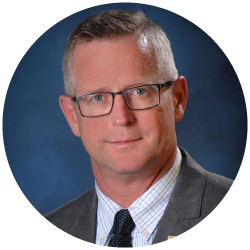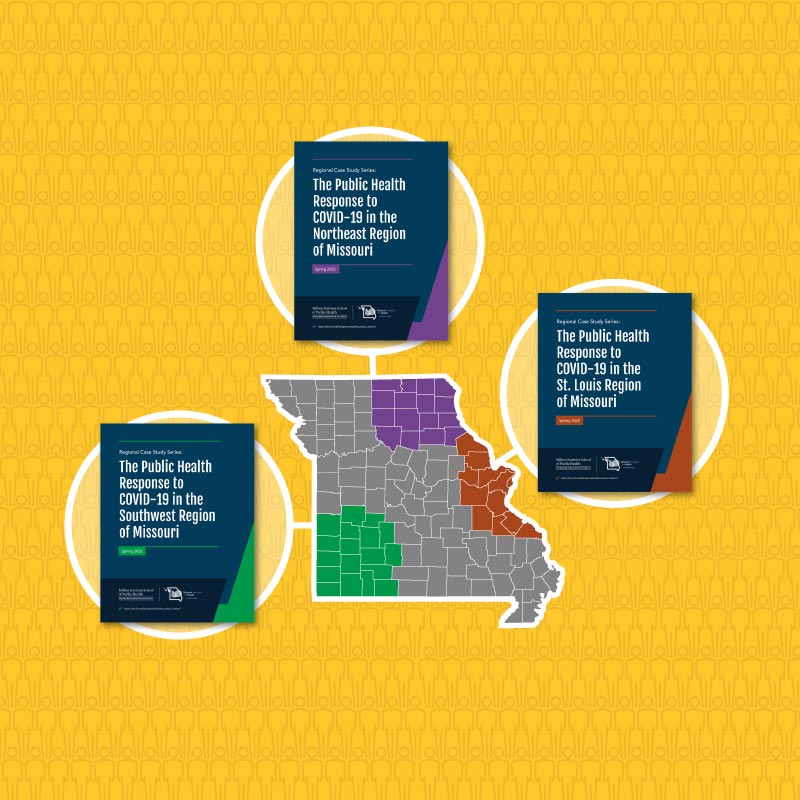
Taking stock after two full years of COVID-19 can feel overwhelming. How do we measure it – in deaths, illnesses, shelter-in-place orders, scientific breakthroughs, in life milestones that we’ve missed? And even now, as we (hopefully) see a light at the end of the tunnel, how do we make sure we’re better prepared for similar public health crises in the future? In this moment of respite, it would be in our best interest as a state looking to achieve health equity, to learn from both the successes and failures of our public health response to COVID-19.

In the summer of 2020, MFH partnered with the George Washington University Milken Institute School of Public Health to assess Missouri’s public health preparedness and response capacities to the pandemic. Beginning in August of 2020, a team of researchers engaged in a real-time study of the evolving pandemic response. In September of 2021, even as the delta variant continued to ravage the country, we released a statewide report on the topic, which outlined eight key recommendations for improving Missouri’s public health system.
Today, we are releasing three additional regional reports that offer findings from conversations with local stakeholders and residents about their experiences with the state and regional pandemic response. These four reports combine to give us the best picture yet of Missouri’s handling of COVID-19 and they are ready to inform systemic improvements that will be key to protecting our public health future. The three new regional reports, representing southwest Missouri, northeast Missouri, and the St. Louis region, highlight many common struggles across the state, as well as assets and barriers unique to each area’s public health approach. For example:
- St. Louis’ regional response was shaped by previous public health emergencies, such as H1N1 and other flu outbreaks. While this generated unprecedented coordination and collaboration across public health and health care entities, centering health care organizations as the primary leader sometimes disregarded public health and social services’ capacity and expertise working with disproportionately affected Black and brown communities.
- The Northeast region’s response benefited from longstanding partnerships across its 16 local public health agencies through shared staffing and resources. However, the public health response did not sufficiently meet the needs of older adults and individuals living in poverty, a significant concern with the region’s high poverty rate.
- Southwest Missouri’s deep experience with emergency preparedness and disaster response efforts proved to be invaluable in mounting a response to COVID. Despite this existing infrastructure and experience, the region’s public policy response lacked cohesion and was characterized by a wide variety of policies that, at times, provided conflicting public health guidance in neighboring jurisdictions.
While each region responded slightly differently, certain themes were consistent across all three – poor coordination with the state, inconsistent data reporting and outdated information technology, and years of disinvestment, all of which left local and regional systems at a severe disadvantage. These findings offer insights into what improvements need to be made to adequately respond to a range of public health issues and not just our next pandemic. Whether it’s addressing behavioral health and substance use, reducing maternal and infant mortality, or improving childhood wellness, reinforcing Missouri’s public health infrastructure is a necessity for the overall health and well-being of Missourians. And there’s no better time to prioritize this than the present.
As many know, Missouri has received billions in American Rescue Plan Act funding. However, most people don’t realize that of the total bucket distributed to Missouri, $340 million, is earmarked specifically for public health improvements and investments. These funds are outlined for purposes such as improving the public health workforce, addressing health disparities, data modernization, and strengthening epidemiology and lab capacity.
For decades, public health has been left behind as an afterthought to health care. But now we have a once-in-a-generation opportunity to thoughtfully invest and reimagine the future of public health in our state. We should be prioritizing efforts to expand its capacity through processes such as accreditation, resource sharing, and leadership development, along with investments into off-the-shelf enhancements to the state’s data and IT infrastructure. Plans for investment should be thoughtfully informed by research to ensure we don’t find ourselves in the same situation a decade from now, questioning again how we got here.
The pandemic has taught us many things, but perhaps one of the most important lessons is that a public health response in a crisis will always depend on leadership and capabilities on the ground. That’s why taking a hard look at our regional responses is vital. We now have before us an opportunity to modernize a fractured and dysfunctional public health system. Do we have the courage to reimagine what is possible? Can we get past an outdated model that has led to a fractured public health response characterized by dramatically varied public health capacities? Can we move toward a system that is regionally responsive? Can we get to a point where we can embrace resource sharing or consolidations that would lead us to a more efficient and effective public health system? Let’s do this the right way so that we can rebuild trust in the public health system and ensure that the health equity issues identified during the pandemic response become an artifact of the past.


